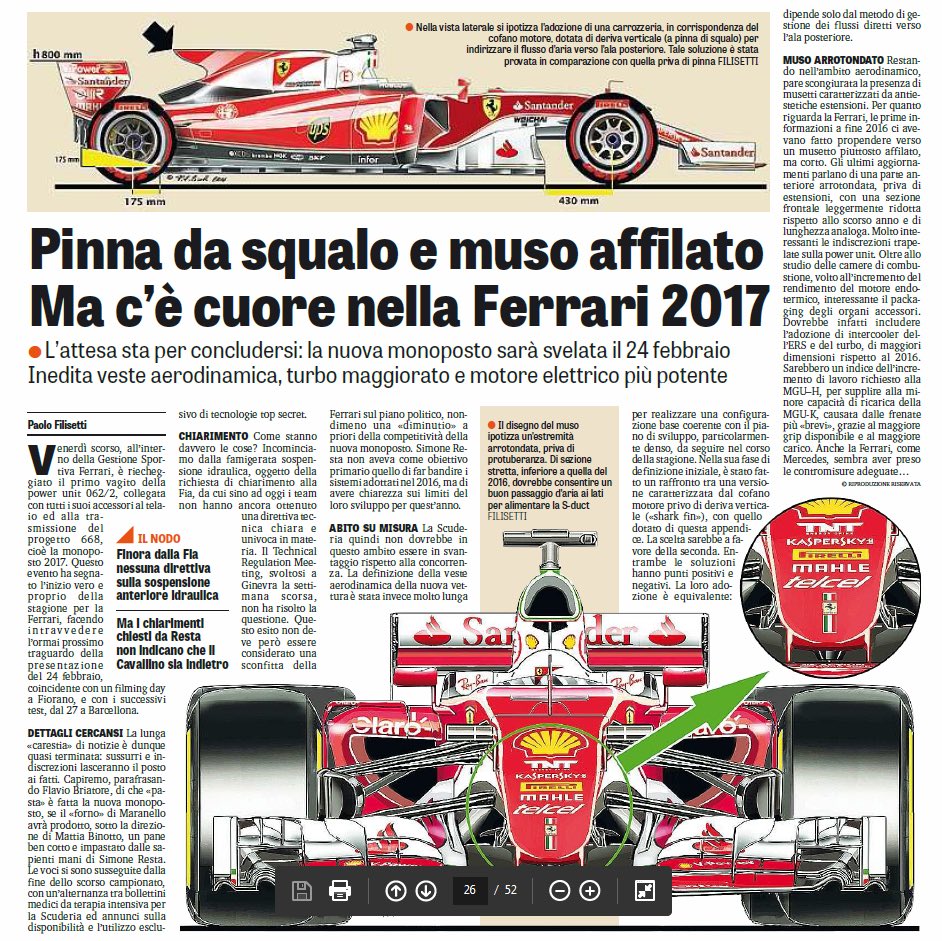*Which explains the early lack of stiffness?
http://cdn.f1i.com/wp-content/uploads/2 ... n-2_FR.jpg


Because it actually makes sense to stop MGU-K drive or even engage generator mode at the end of the straight if they were marginal on electrical energy.bhall II wrote:Why?ME4ME wrote:I doubt that they designed the gearbox insufficiently rigid to experience tortional issues while driving on a straight. The drop speed, I'd put that down to engine mapping and ERS recovery strategy.
Picture something kinda sorta like this...Blackout wrote:*Which explains the early lack of stiffness?



Lets return the favour. Why do you think your idea is more likely than ERS management?bhall II wrote:Picture something kinda sorta like this...Blackout wrote:*Which explains the early lack of stiffness?
http://i.imgur.com/gm6QDVU.gif
Then imagine what might happen if an insufficiently stiff gearbox case squeezes a turbine housing--containing turbine blades spinning at 50,000rpm--that's not quite strong enough...
http://nextgen-auto.com/IMG/arton101730.jpg
Yes.ME4ME wrote:And do you think it is realistic that Ferrari design, test and validate a gearbox that is so floppy that it negetivly affects top speed on the straight?
bhall II wrote:Also... https://twitter.com/tgruener/status/756474001799647232
Big Mangalhit wrote:Bhall, As you said drag increases with the square of speed. It is then way more usefull to have 100hp in lower speeds than in higher speeds.
bhall II wrote:Big Mangalhit wrote:Bhall, As you said drag increases with the square of speed. It is then way more usefull to have 100hp in lower speeds than in higher speeds.
If I send you my mailing address, will you send me some of what you're smoking? Please?
bhall II wrote:That pretty much makes you against the idea.
Drag is proportional to the square of speed, and the power needed to overcome drag is proportional to the cube of speed. That means you'd need an entirely unreasonable amount of power to push F1-like, open-wheel drag though the air at 450kph. (Think: horsepower in the thousands.)
Here's Gordon Murray's idea of extreme...
http://i.imgur.com/TiKtxxC.jpg
(Click to enlarge)
That would lead on its own to higher speed. Atleast, if traction can handle the torque. Else it ends up just being wasted.Big Mangalhit wrote:Bhall, As you said drag increases with the square of speed. It is then way more usefull to have 100hp in lower speeds than in higher speeds. For instance the veyron needed 120hp to go from 414km/h tp 415km/h but my car goes from 0 to 200 with the same hp and probably more drag (not sure though).
So it is only logical that teams will dump all energy at low speeds after corners and then stop spending it and start generating energy at higher speeds where hp is less valuable. For me it seems also pretty clear this was down to the maps of the engine which I still think are very important for lap time.
Correct. You want all the power you can possibly muster at high speeds in order to overcome the drag force. It's at low speeds, especially when the car is traction-limited, that you don't need max power.Big Mangalhit wrote:bhall II wrote:Big Mangalhit wrote:Bhall, As you said drag increases with the square of speed. It is then way more usefull to have 100hp in lower speeds than in higher speeds.
If I send you my mailing address, will you send me some of what you're smoking? Please?bhall II wrote:That pretty much makes you against the idea.
Drag is proportional to the square of speed, and the power needed to overcome drag is proportional to the cube of speed. That means you'd need an entirely unreasonable amount of power to push F1-like, open-wheel drag though the air at 450kph. (Think: horsepower in the thousands.)
Here's Gordon Murray's idea of extreme...
http://i.imgur.com/TiKtxxC.jpg
(Click to enlarge)
Obviously not when traction limited, but as soon as you spot being limited you want to dump all your power on lower speeds. In other words if you could lend power you have on the end of the straight to the begining of the straight you would have a better laptime. Which is btw exactly what these cars do with the MGU-H. As you said you need "thousands of HP" to push the car faster at 450km/h but that hp is way more efective and valuable at lower speeds.bhall II wrote:Correct. You want all the power you can possibly muster at high speeds in order to overcome the drag force. It's at low speeds, especially when the car is traction-limited, that you don't need max power.Big Mangalhit wrote:bhall II wrote:
If I send you my mailing address, will you send me some of what you're smoking? Please?bhall II wrote:That pretty much makes you against the idea.
Drag is proportional to the square of speed, and the power needed to overcome drag is proportional to the cube of speed. That means you'd need an entirely unreasonable amount of power to push F1-like, open-wheel drag though the air at 450kph. (Think: horsepower in the thousands.)
Here's Gordon Murray's idea of extreme...
http://i.imgur.com/TiKtxxC.jpg
(Click to enlarge)
That is a question of acceleration vs top speed, and has little to do with drag.Big Mangalhit wrote:Obviously not when traction limited, but as soon as you spot being limited you want to dump all your power on lower speeds. In other words if you could lend power you have on the end of the straight to the begining of the straight you would have a better laptime. Which is btw exactly what these cars do with the MGU-H. As you said you need "thousands of HP" to push the car faster at 450km/h but that hp is way more efective and valuable at lower speeds.bhall II wrote:Correct. You want all the power you can possibly muster at high speeds in order to overcome the drag force. It's at low speeds, especially when the car is traction-limited, that you don't need max power.Big Mangalhit wrote:
So a system of borrowing and lending hp through the use of an acumulator is be used to lower the laptime.